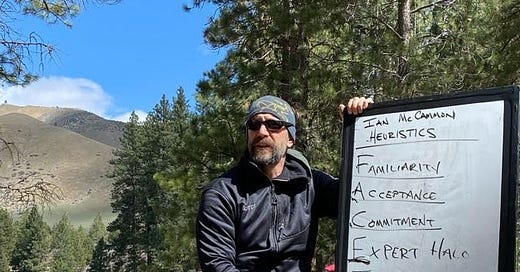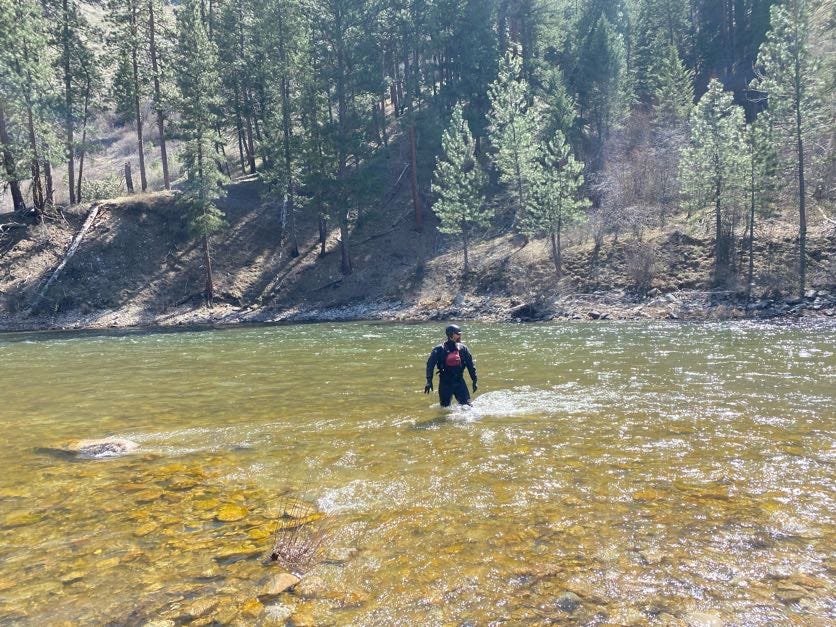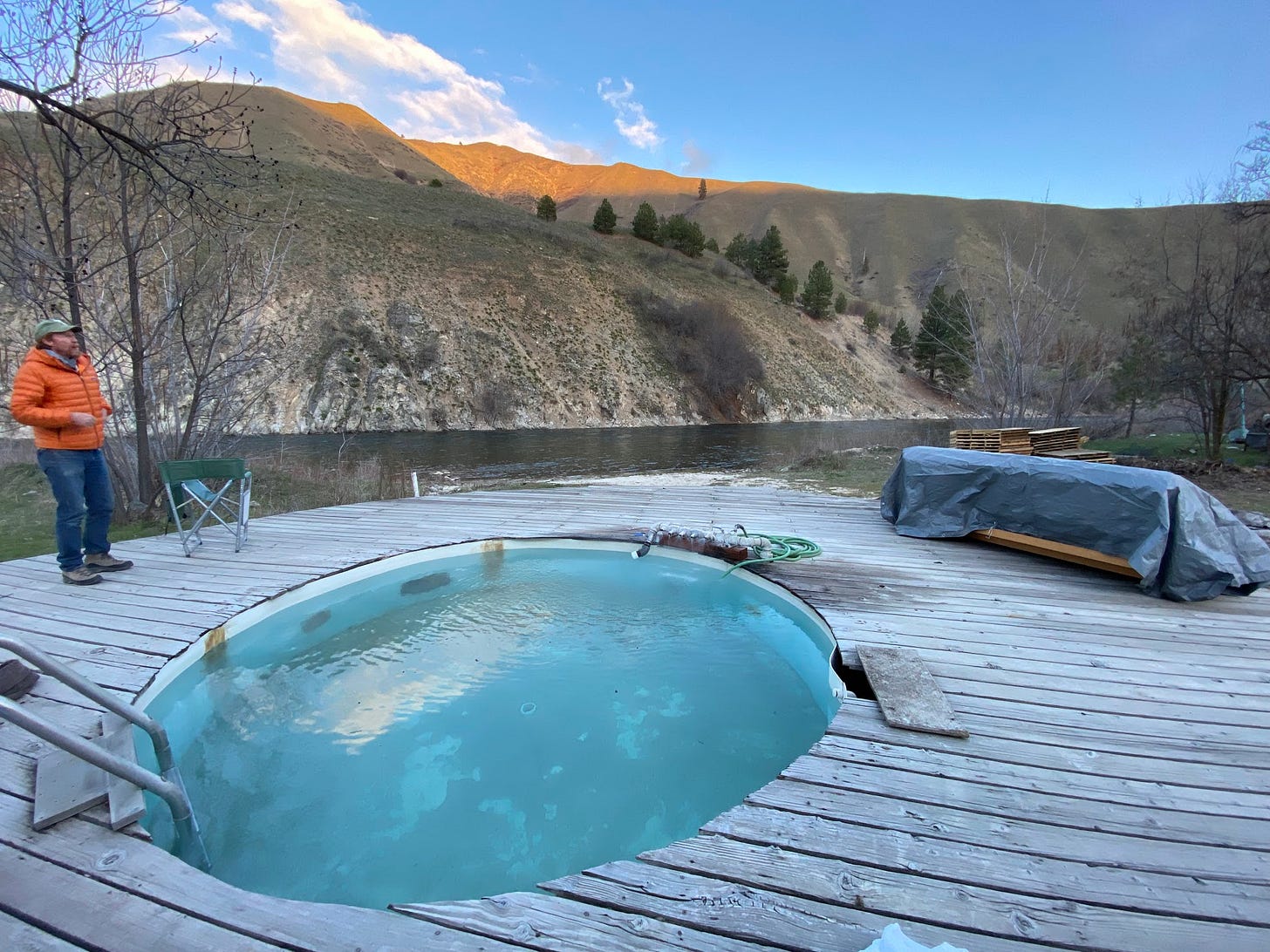Day two started out with a longer drive up towards our small town. We settled on a spot in our river where we had historically seen cars go off the dirt road and land in the river. In fact, the spot we would later be testing our skills out that day still had an old rusted truck smack dab in the middle of the run just a few feet under the rushing water.
As we started out the day we were instructed to grab some ropes and show off our knot tying skills... which, despite our fire chiefs best efforts to train us on this recently, we sucked at tying them. We painfully went over figure eights, bowlines, half-hitches, and number of other very important knots that we all fumbled through. As we sat around embarrassing ourselves the mood created by our lack of knot tying abilities manifested itself in nature and the temperature started to drop... quickly.
As we all sat around trying to fight back shivers we went into some theory before once again hitting the water. During that theory course, one of the most interesting things that we learned was FACETS... an acronym that helped to explain why things go wrong on swift water calls.... but, what was fascinating to me was that this complacency checklist could be applied to anything... work, relationships, etc.
F: amiliarity (If you are familiar with something you are less likely to prepare or expect something to go wrong)
A: cceptance (If you know you have to do something, you may put off preparation)
C: ommitment (You feel like you HAVE to get something done because you made a commitment, even if your spidey senses are tingling and telling you otherwise)
E: xpert Halo (You are an expert in your field so you may not prepare appropriately for seemingly routine things… the “I got this” attitude)
T: ime Sensitive (You set an arbitrary deadline which could lead to rushed efforts)
S: ocial Proof (... just don’t do it for the gram’, OK?)
The FACETS acronym stuck with me and found a permanent home in the recesses of my brain before we finally put away our pens and shivered our way into our dry suits and made it down to the water’s edge. What was interesting on this day was that we were in a much larger section of the river that was not particularly deep... maybe waist high at best, but we would be practicing some of the more ‘simple’ techniques of wading (of which there are six).
Wading really just means using different tools (people, paddles, etc.) to help break up the current in order to slowly work your way to the middle of the river where there may be a “patient” that needs saving... When I started on my first solo wade out into the water I thought this would be a piece of cake, but before I was even halfway across on my first attempt the river picked me up like a piece of loose debris and deposited me out further downstream. This was the same for all of the others, including our bigger friends on the force... no one was a match for the river, even at waste deep during a mild spring run off!
Humbling to say the least, the rest of the afternoon we learned the basics of more complex wading and tethered rescue swims which were a blast. We culminated the day with a real trial by fire scenario where our instructor said “good luck... save me!” and jumped into the craziest part of the river... which saw us all scrambling for throw bags and tethering each other up for some rescue swims.
After a while we all got a taste of what it was like to save someone and put our newly acquired skills to the test... all of which needed A LOT more sharpening... which they inevitably would the next day when we went yet further upstream to an area with even more water and obstacles.





